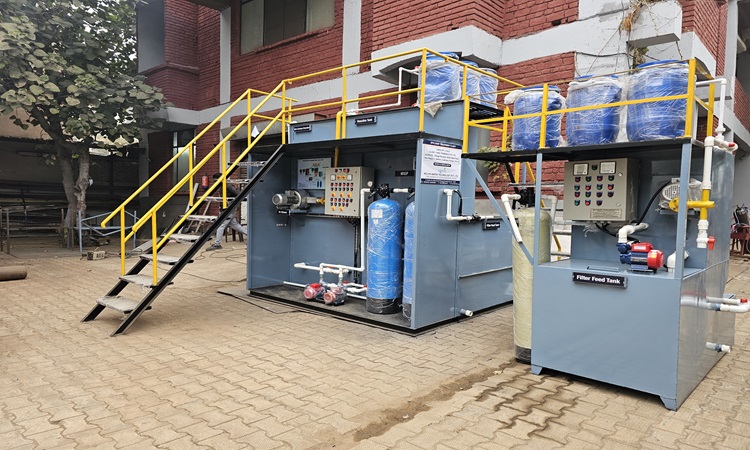Water is the most essential resource for life, yet it is also the most misused and polluted. As urbanization, industrialization, and population growth increase, so does the production of wastewater. If untreated sewage is released into natural water bodies, it leads to severe water pollution, health hazards, and environmental degradation. This is where a Sewage Treatment Plant (STP) plays a critical role. An STP is designed to treat domestic, commercial, and sometimes industrial wastewater, ensuring that harmful contaminants are removed before the treated water is either discharged into the environment or reused for secondary purposes.
What is a Sewage Treatment Plant?
A Sewage Treatment Plant (STP) is a facility that treats wastewater generated from households, offices, commercial complexes, and industries. This wastewater primarily contains organic waste, soaps, detergents, food residues, oils, and sometimes harmful microorganisms. The goal of an STP is to remove physical, chemical, and biological impurities, making the water safe for discharge or reuse.
Unlike industrial effluent treatment plants (ETPs) that handle chemical-laden wastewater, STPs mainly deal with sewage generated by human activity.
Why is Sewage Treatment Important?
The importance of sewage treatment cannot be overstated. Untreated sewage leads to waterborne diseases, foul odors, and damage to aquatic life. By treating wastewater:
- Public Health is Protected – Harmful pathogens and contaminants are removed, reducing the spread of diseases like cholera, typhoid, and dysentery.
- Environmental Protection – Prevents water pollution, maintaining the health of rivers, lakes, and groundwater sources.
- Resource Recovery – Treated water can be reused for irrigation, landscaping, flushing, and cooling towers in industries.
- Regulatory Compliance – Local and national environmental boards mandate sewage treatment to ensure pollution control.
- Sustainability – Reduces dependency on freshwater by promoting water recycling.
How Does a Sewage Treatment Plant Work?
The treatment process in an STP typically involves three stages: primary, secondary, and tertiary treatment.
- Preliminary Treatment
- Large solids like plastics, rags, and debris are removed using bar screens.
- Grit chambers settle heavy particles like sand and stones.
This stage protects pumps and equipment from damage.
- Primary Treatment
- The wastewater enters a sedimentation tank.
- Suspended solids settle at the bottom, forming sludge.
- Oils and grease float to the surface and are skimmed off.
- Secondary Treatment (Biological Treatment)
- This stage removes dissolved organic matter using microorganisms.
- Common methods include:
- Activated Sludge Process (ASP): Air is supplied to encourage microbial growth that consumes organic matter.
- Moving Bed Biofilm Reactor (MBBR): Uses plastic carriers for microbial growth, increasing surface area.
- Sequential Batch Reactor (SBR): A time-sequenced process where aeration, settling, and decanting happen in one tank.
- Tertiary Treatment
- Final polishing step for high-quality water.
- Techniques include sand filtration, UV disinfection, and chlorination.
- Ensures removal of pathogens, nutrients, and trace pollutants.
- Sludge Management
- The settled sludge from primary and secondary stages is treated separately.
- It can be digested anaerobically to produce biogas (renewable energy).
- Dried sludge can be used as manure.
Types of Sewage Treatment Plants
- Conventional Activated Sludge Plant – Widely used for municipal sewage.
- MBBR-Based STP – Compact, low-maintenance system suitable for residential complexes.
- SBR-Based STP – Efficient, automated, and requires less space.
- Membrane Bioreactor (MBR) STP – Advanced system producing very high-quality water suitable for reuse.
- Compact Prefabricated STP – Designed for small housing societies, hotels, and institutions.
Applications of Sewage Treatment Plants
- Residential Complexes and Housing Societies – For apartment wastewater management.
- Commercial Buildings and IT Parks – To comply with environmental regulations.
- Hotels and Restaurants – Managing kitchen and washroom sewage.
- Hospitals and Institutions – Ensuring hygienic disposal of wastewater.
- Industries – Reusing treated water in cooling towers and landscaping.
- Municipalities – Large-scale sewage treatment for cities and towns.
Benefits of Sewage Treatment Plants
- Prevents Water Pollution – Protects rivers, lakes, and groundwater.
- Promotes Reuse of Water – Treated water can be used for irrigation, flushing, and landscaping.
- Reduces Water Scarcity – Conserves freshwater resources.
- Generates Biogas – Sludge digestion produces energy.
- Ensures Regulatory Compliance – Helps organizations avoid fines and legal issues.
- Protects Ecosystem – Maintains aquatic biodiversity.
- Improves Public Image – Businesses and housing societies adopting STPs showcase environmental responsibility.
Future of Sewage Treatment Plants
The future of sewage treatment is moving towards automation, decentralization, and energy efficiency. Compact STPs using MBBR and MBR technology are gaining popularity due to their small footprint and high treatment efficiency. Moreover, integration of IoT and smart sensors enables remote monitoring, predictive maintenance, and optimized energy usage.
Countries like India, facing rapid urbanization, are increasingly mandating STPs for residential complexes and industries. Water recycling and zero-liquid discharge systems are also becoming essential for sustainable development.
Conclusion
A Sewage Treatment Plant (STP) is no longer an optional facility—it is a necessity for sustainable urban and industrial living. By treating wastewater effectively, STPs not only prevent pollution but also contribute to water conservation, energy generation, and environmental protection. From residential societies to large-scale municipal projects, the role of sewage treatment plants is indispensable in achieving clean water goals and ensuring a healthier future.



